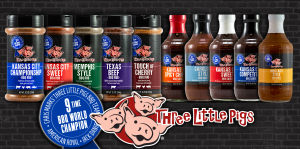
Instead of cooking on a grate, you place your meat right on top of the glowing coals.
It’s raw, dramatic, and surprisingly effective when done correctly.
How it works:
- Build a hardwood or lump charcoal fire — avoid briquettes; they contain binders that leave residue.
- Let it burn until you have a bed of white-hot embers, not open flame.
- Blow off the ash or spread the coals evenly.
- Lay your meat directly on the coals — usually thick cuts like ribeyes, tomahawks, tri-tip, or even vegetables like peppers and onions.
- Flip once — no poking or pressing — and finish over indirect heat if needed.
This gives you a deep crust, smoky-charred edges, and a primal flavor you can’t get from grates.
🥩 Best Cuts for Coal Grilling
Cowboy-style direct-coal cooking favors thicker, fattier cuts that can handle intense heat:
- Ribeye / Tomahawk steak
- Tri-tip or sirloin
- Short ribs (English cut)
- Pork chops or tenderloin medallions
- Lamb racks
- Vegetables: onions, peppers, corn (in husk), even avocados or mushrooms
Lean cuts dry out — go for marbled beef with fat to protect the meat.
🧂 Seasoning & Prep
Keep it simple — you want the fire and fat to shine.
- Pat meat dry to prevent ash sticking.
- Season generously with coarse salt, black pepper, and a touch of garlic.
- (Three Little Pigs “All-Purpose” or “KC Sweet” rubs are perfect — the sugar caramelizes beautifully in this high heat.)
- Oil lightly if you’re nervous about sticking (avocado or beef tallow works well).
Optional: Brush with a BBQ sauce glaze after pulling off the coals — it prevents burning and adds shine.
⏱️ Timing & Technique Tips
- 2–3 minutes per side for 1½-inch steaks — adjust for thickness.
- Use long tongs (no forks) and a fireproof glove.
- After searing, rest the meat on a grate or stone off the fire for 5–10 minutes to let juices redistribute.
- If you’re nervous about ash, you can rest the coals under a thin layer of foil with vent holes, but purists go straight-on.
🪵 Wood Choice Matters
Different hardwoods bring different smoke tones:
- Oak: clean, classic BBQ flavor.
- Hickory: strong, bacon-like smoke.
- Mesquite: bold, earthy, authentic cowboy heat.
- Pecan or cherry: softer, slightly sweet smoke.
Never use treated wood, resinous pine, or green logs.
🍽️ Flavor & Texture
What makes coal-grilling unique:
- Charred crust + juicy center — Maillard reaction at its peak.
- Micro-smoke flavor from fat dripping on embers.
- Crispy fat edges and deep caramel notes from sugars in the rub.
- A subtle “ash saltiness” — that minerally campfire taste that’s pure cowboy BBQ.
🏕️ Modern Cowboy Twist
Pair it with:
- Cast-iron cowboy beans or jalapeño cornbread cooked in the same coals.
- A drizzle of Three Little Pigs Kansas City Sweet Sauce right before slicing for that sweet-smoky finish.
Chris Marks (CBBQE) Chief BBQ Expert Three Little Pigs Rubs & Sauces















